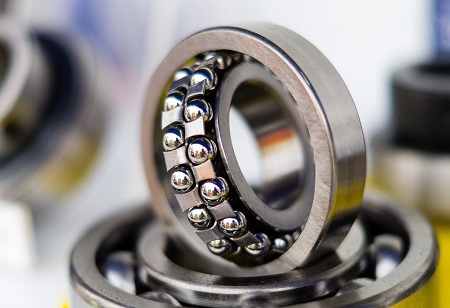From a mini supermarket trolley to huge power plants, a myriad of both light-duty and
industrial equipment would not be able to function without implementing bearings in some form. There is a growing trend for
integrated bearings especially in the automotive and aerospace industry, where the components surrounding the bearings become an integral part of the bearing itself. Such types of bearings are developed with an intention to reduce the number of bearing components in the final assembled product and as a consequence, the implementation of integrated bearings decreases the cost of the equipment, increases reliability, offers ease of installation, and most importantly boosts service life.
Reducing gearbox failures in wind turbines
A bearing is comprised of three pieces such as the rollers, an inner race which is pressed onto a shaft, and lastly the outer race which is pressed into the gear bore. If a gearbox has to endure the harsh as well as the variable conditions inside an operating wind turbine, it is highly critical to implement exceptional engineering and quality components. But even with a top-notch O&M strategy, bearing failure rates typically occur every 5 or 10 years based on the type and position that erodes most of the turbines’ two decades of life expectancy.
“Damage to a planetary bearing can accumulate quickly,” explains Richard Brooks, Manager of the Wind Energy Aftermarket at the Timken Company. “And unlike high-speed bearings, replacing a planetary bearing requires a more complex strategy than simply sending a couple of wind techs up the tower for repairs. Typically, a crane is needed on-site, and potentially a full rebuild of the gearbox.”
Intending to address this problem, the wind power industry is working on obtaining a better understanding and mitigate failures and eliminate repair services that are expensive and one way to achieve this is to repair the gearbox without actually removing it, in the nacelle.
“A few years back if you had a planet bearing problem, that gearbox had to be removed from the nacelle and tower, which always required a crane,” says Brooks. “Service companies have gotten creative and figured out ways to replace planetary bearings up the tower when possible. This delivers cost savings.”
Another way to reduce failures that the bearing manufacturing companies are currently working on is the redesigning of bearings and combining a few other components. What happens when this idea of designing is implemented is that the shaft may be used as the inner race of the bearing or machine the outer race into the gear’s bore.
“The integration work essentially machines the bearing’s outer race into the inner bore of the gear,” explains Brooks. What is the most significant use of an integrated bearing is that it reduces the number of components used in the assembly. This is carried out by directly machining bearing races into the gearbox’s surrounding components. However, this is only an option for the cylindrical as well as the tapered gearbox planet bearings.
“In some ways, it brings complexity into the manufacturing process because bearings are not made at gear plants nor are gears made at bearing plants,” he points out. “But there are a lot of advantages to integrating the two.”
